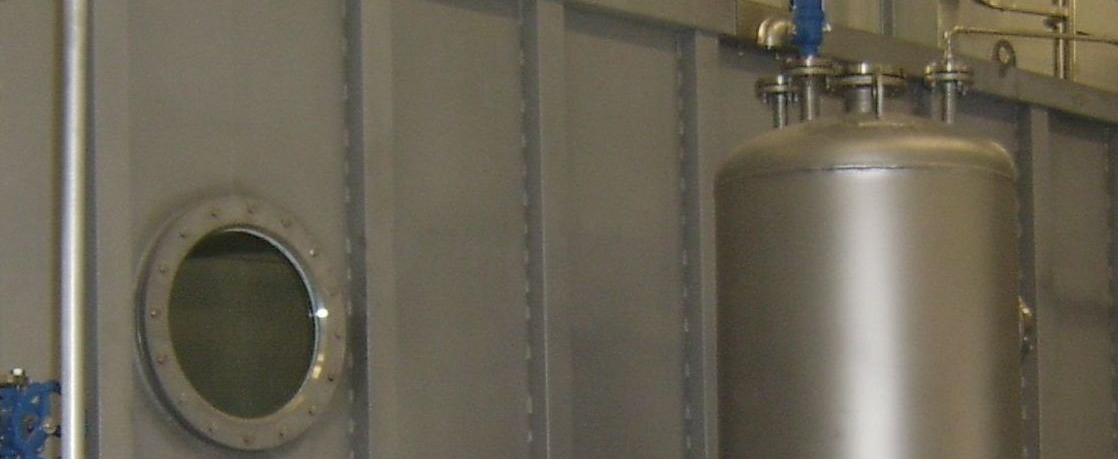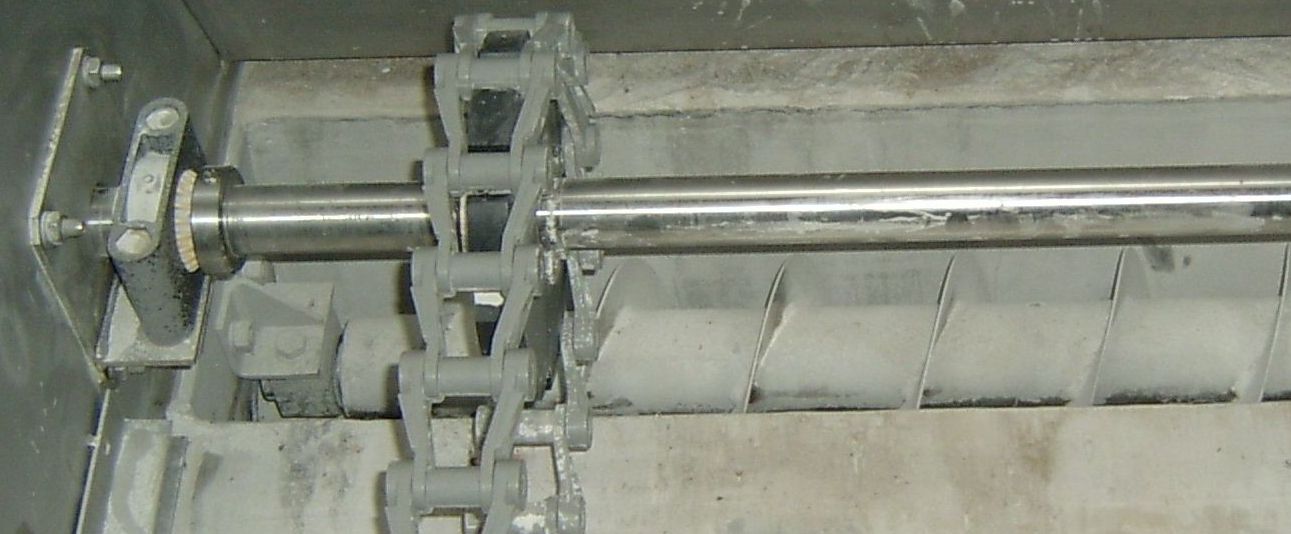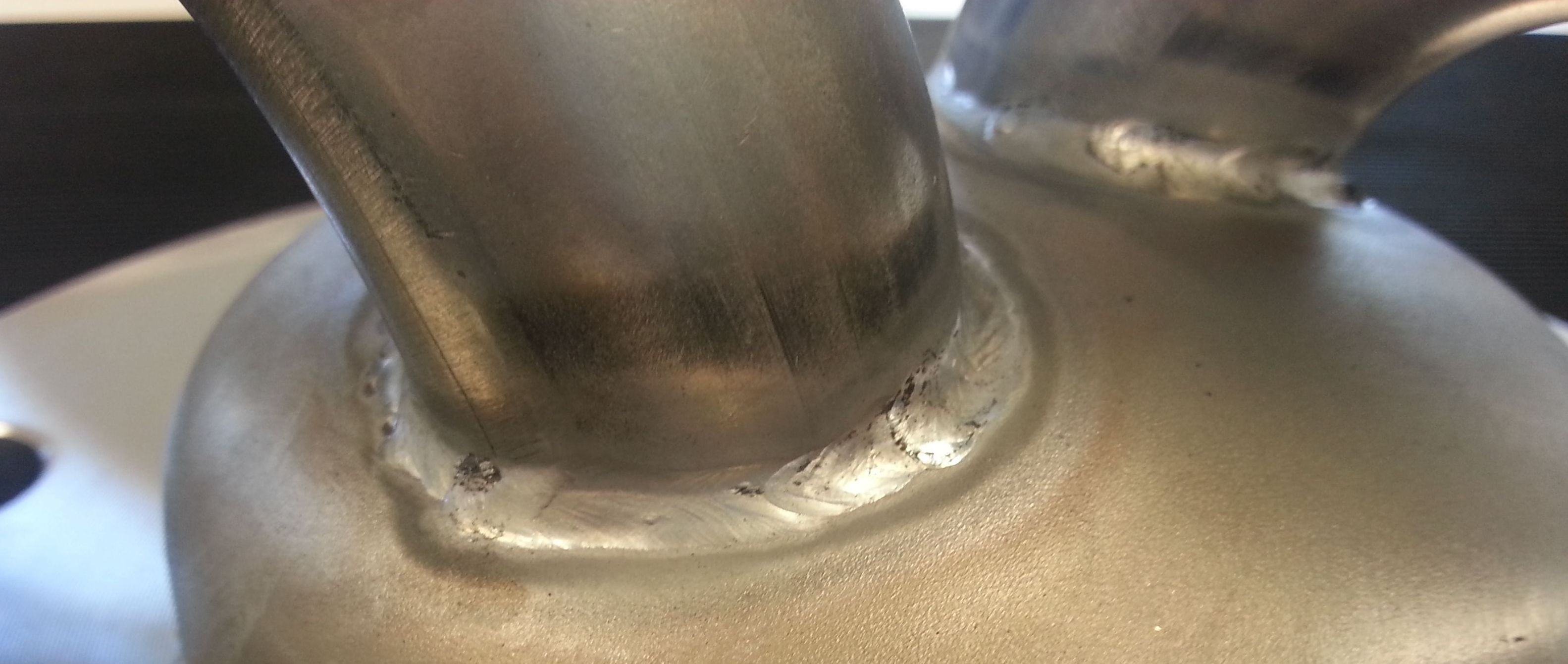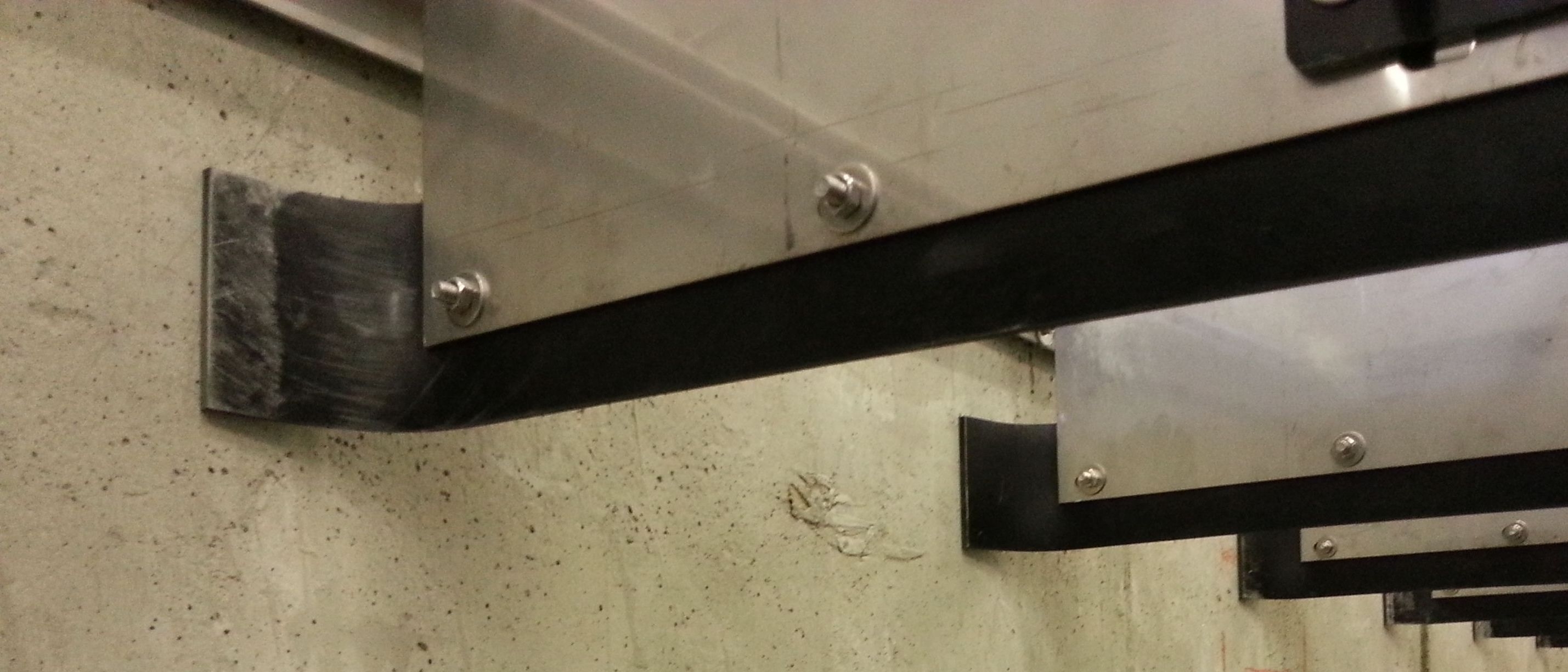Description: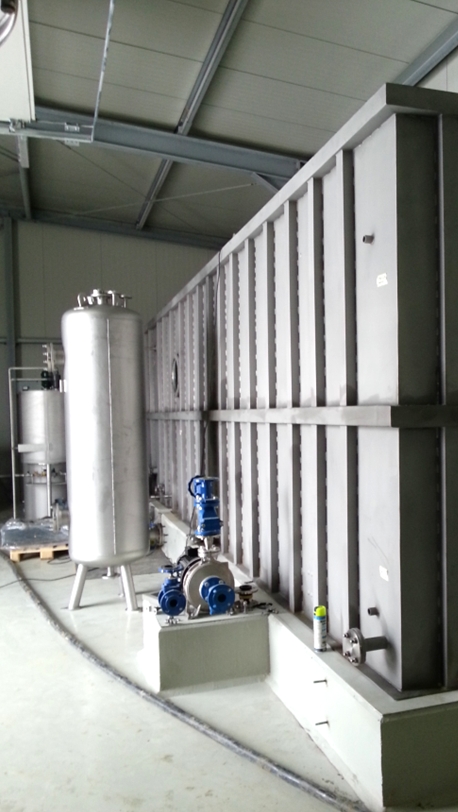
We construct, manufacture, deliver and assemble dissolved air flotation systems. We also manufacture components and part and also parts for optimizing existing DAF-plants.
We manufacture steel constructions acc. DIN 18800-7, pressure vessels and tanks acc. to AD-HP0, systems of water hazardous mediums acc. to WHG 19 l and gas- and water pipes and systems acc. to AD-HP0 or according to special guidelines.
Due to that work we use TÜV / MOT-approved welders for several welding processes, like WIG/TIG-welding, MIG-welding, MAG-welding and MMA-welding.
We certainly also offer the testing of the welding. For example X-ray examination or ultrasound examination are not a problem at all.
For some applications it might be necessary to add external inspectors to observe the welding processes. In such caseswe cooperate with SLV (Schweißtechnische Lehr- und Versuchsanstalt Mannheim).
Special Benefits:
- Individual construction according to our customer’s requirements.
- Construction and determination acc. to our customer’s requirements
The following materials are available:
- Steel-galvanized or coated
- Typical stainless steels (s.s) like s.s. 304 or s.s. 316 / s.s. 316 Ti
- Aluminium
- For special requirements we can even offer special stainless steels like Duplex, Hastelloy, Incolloy or others
The following options are available:
- DAF-VKx= with „x“ pretreatment chambers or tanks
- DAF-BR= with ground slude scraper
- DAF-AS= with sludge conveyor
- DAF-ST= with sludge funnels
- DAF-DA= with pressure vessel and injection system
- DAF-KA= complete compact system
Funktionsprinzip der Flotation:
Die Flotation ist ein wichtiges Grundverfahren der mechanischen Flüssigkeitsabtrennung, das im Bereich der Abwassertechnik und Schlammbehandlung immer häufiger erfolgreich eingesetzt wird. Dabei unterscheidet man je nach Gasblasengröße und der Art ihrer Erzeugung die Begasungs-, Elektro- und Entspannungsflotation. Von diesen Verfahren werden mit der Entspannungsflotation in der Abwasserreinigung die besten Ergebnisse erzielt.
Bei der Entspannungsflotation wird das Abwasser oder ein Teilstrom des Klarwassers in der Regel bei einem Druck von 4 bis 6 bar mit Luft gesättigt und anschließend über die Entspannungsarmaturen in das Flotationsbecken geleitet. Nach der Entspannung auf Atmosphärendruck perlt die überschüssige Luft in Form feiner Blasen aus. Die Gasblasen bilden in der Kontakt- und Mischzone mit dem Feststoff ein Agglomerat, das an die Oberfläche des Beckens steigt. Der flotierte Feststoff wird dann durch eine geeignete Räumvorrichtung abgenommen und ausgeschleust.
Für den erfolgreichen Einsatz dieser Technologie müssen folgende Kernstücke der Entspannungsflotation beachtet werden:
- Hohe Luftsättigung von Abwasser und Druckwasser
- Erzeugung einer optimalen Gasblasenspektrums
- Anlagerung der Gasblasen an die Feststoffteilchen
- Geometrie und Strömungsstruktur des Flotationsbeckens
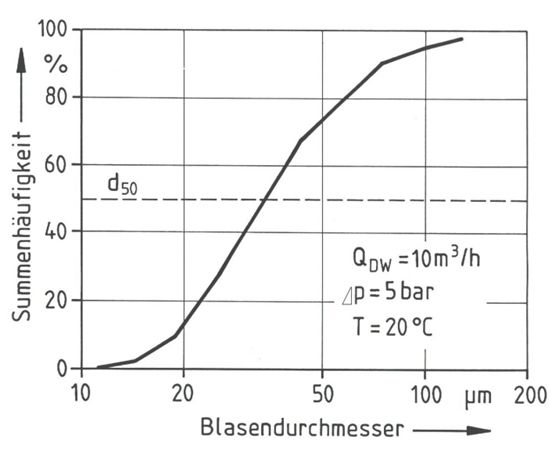 Die Luftzugabe zum Abwasser und Druckwasser kann durch Einblasen in ein Mischrohr oder in eine Mehrphasenpumpe, mit Hilfe einer Blasensäule oder eines Abstromreaktors, über einen Injektor oder in einen Druckkessel erfolgen. Durch eine Kombination der verschiedenen Systeme ist es möglich mit geringem Energieverbrauch den erfolgreichen spezifischen Lufteintrag zu erzielen. Die Systeme können sowohl bei der Vollstrom-, Teilstrom- als auch bei der Klarwasserbelüftung eingesetzt werden. Die Anlagerung der Gasblasen an die Feststoffteilchen kann durch die elektrostatischen und chemischen Bindungen oder durch Einlagerungen und Einbau in das Gefüge von Flocken erfolgen. Die komplizierten Anlagerungsmechanismen werden von den Oberflächeneigenschaften der Feststoffteilchen stark Beeinflusst. Dabei ist speziell die Oberflächenladung der Teilchen bzw. Flocken zu beachten.In der Praxis erfolgt die Dimensionierung der Flotationsbecken sowohl auf der Basis der Klärflächenbelastung als auch der Durchflusszeit. Die Durchflusszeit sollte für eine sichere Abtrennung zwischen 15 und 45 min liegen. Bei der Klärflächenbelastung muß man die unterschiedlichen Definitionen, bezogen auf die Oberfläche des Flotationsraums, beachten:
Die Luftzugabe zum Abwasser und Druckwasser kann durch Einblasen in ein Mischrohr oder in eine Mehrphasenpumpe, mit Hilfe einer Blasensäule oder eines Abstromreaktors, über einen Injektor oder in einen Druckkessel erfolgen. Durch eine Kombination der verschiedenen Systeme ist es möglich mit geringem Energieverbrauch den erfolgreichen spezifischen Lufteintrag zu erzielen. Die Systeme können sowohl bei der Vollstrom-, Teilstrom- als auch bei der Klarwasserbelüftung eingesetzt werden. Die Anlagerung der Gasblasen an die Feststoffteilchen kann durch die elektrostatischen und chemischen Bindungen oder durch Einlagerungen und Einbau in das Gefüge von Flocken erfolgen. Die komplizierten Anlagerungsmechanismen werden von den Oberflächeneigenschaften der Feststoffteilchen stark Beeinflusst. Dabei ist speziell die Oberflächenladung der Teilchen bzw. Flocken zu beachten.In der Praxis erfolgt die Dimensionierung der Flotationsbecken sowohl auf der Basis der Klärflächenbelastung als auch der Durchflusszeit. Die Durchflusszeit sollte für eine sichere Abtrennung zwischen 15 und 45 min liegen. Bei der Klärflächenbelastung muß man die unterschiedlichen Definitionen, bezogen auf die Oberfläche des Flotationsraums, beachten:
- Die Strömungsstruktur im Flotationsbecken ist von entscheidender Bedeutung für die Belastbarkeit der Anlage. Sie wird durch die Geometrie des Beckens, die Anordnung des Zu- und Ablaufs sowie die Einbauten bestimmt.
- Bei der Entspannungsflotation liegt die Gasblasengröße normalerweise im Bereich eines mittleren Durchmessers von 40 bis 60 µm. Die experimentellen Untersuchungen mit einer Druckwassermenge bis 20 m³/h haben ergeben, dass im Allgemeinen die Bildung von feinen Gasblasen mit steigendem Sättigungsdruck und niedriger Oberflächenspannung gefördert wird, wie aus dem folgenden Bild zu ersehen ist. Von entscheidender Bedeutung auf das erzielte Gasblasenspektrum sind aber auch die eingesetzten Entspannungsarmaturen. Hierzu stehen Ventile, Düsen und Blenden-Regelschieber zur Verfügung.
- Hydraulische Flächenbeschickung Zulauf zur Flotation + Druckwasser
- Abwasser-Flächenbeschickung Zulauf zur Flotation
- Feststoff-Flächenbelastung Feststoffmenge zur Flotation
Die Bemessungsgrößen sind von der Steig- und Horizontalgeschwindigkeit des Gasblasen/Feststoff-Komplexes im Flotationsraum abhängig. Die Größe der Steiggeschwindigkeit des Feststoffs ist neben den Flotationseigenschaften von dem Sättigungsdruck und der Druckwassermenge abhängig. Da diese beiden Größen während des Flotationsprozesses verändert werden können, werden sie als Steuergrößen bezeichnet.
How does DAF work? (please see the following picture)
The term „Flotation“ describes a special recycling system for the enrichment of minerals and other chemical substances. In the field of water-recycling the substances move up to the surface.
The reason for the impetus to the surface is the principle of Archimedes.
Because of the hydrostatic impetus the substances move up to the surface where they can be removed by using scraper devices.
The substances have to be pretreated and converted into flocs to ensure that they are able to move up to the surface. Only flocs can be lifted up to the surface by filigree gas bubbles.
The necessary bubbles are generated in a pressure vessel. The compressed air - water mixture is passed over several flash valves into the flotation tank.
After flashing to atmospheric pressure the excess air bubbles appear in form of very small bubbles. These small gas bubbles are absorbed by the solids in the contact and mixing zone and lift up the solids to the surface of the tank.
The size of the bubbles is between 20 - 80 µm.
P&I Flow Chart of a DAF-System:
The following picture shows in general the flow process including all essential parts and devices of a high performance DAF-system without pre- and post-treatment processes.
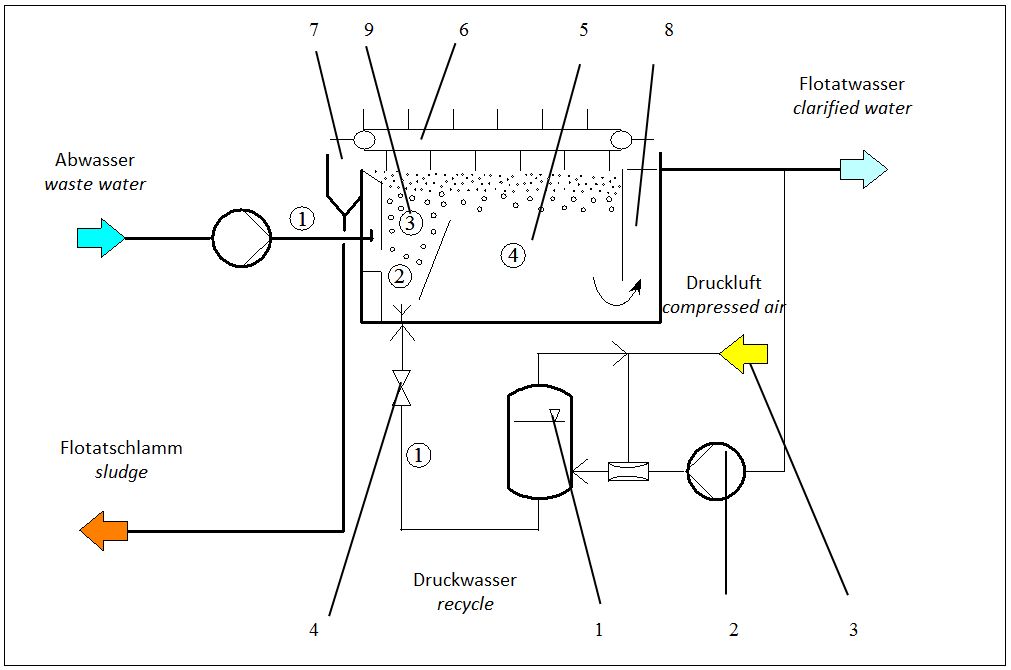
Die Anlage besteht aus / The system consists of:
|
Dispersionsstation / Pump station and pressure vessel: 1 Druckkessel mit Regelorganen / Pressure vessel 2 Recyclepumpe / Pump station for recycle 3 Kompressor / Compressor 4 Dispersionsventile / Special valves |
Flotationsbehälter / Flotation tank: 5 Flotationsraum / Flotation tank 6 Räumer / Scraper 7 Flotatschlammkammer / Sludge tank 8 Klarwasserkammer / clarified water tank 9 Kontakt- & Mischzone / contact and mixing zone |
Advantages of waste water treatment with DAF
Dissolved Air Flotation (DAF) is a high efficient separation process in the field of waste water treatment. The main advantages in the opposite to sedimentation processes are as follows:
- Much larger surface capacity and therefore much smaller tanks.
- Low capital expenditure and low operating costs
- Better clarified water quality.
- Active sludge separation process by controlling the lifting speed. Therefore a higher flexibility of the complete process at changing parameters by increasing/reducing the white water quantity.
- High dry solid content of the sludge.
General advantages of DAF-Systems for post clarification processes:
- No scum problems.
- Short retention period of the sludge during the post clarification.
- No movements of the sludge during the post clarification depending on the weather conditions.
- No additional active sludge separation process necessary
- Short retention period of the sludge.
Special advantages of our DAF-Flotation-Systems:
- Extremely large surface capacity up to 15 m³ x m-² x h-1 and therefore even lower required space.
- Extremely high sludge capacity up to 30 kg x m-² x h-1
- Extremely high air saturation up to more than 90% at a pressure of 4-5 bar due to a special designed pressure vessel and injection system
- High excess of air and therefore a huge amount of micro bubbles after flashing to atmospheric pressure
- Generation of bubble sizes from 20 to 80 mm due to a special piping and valves.
- High adhesion because of electrostatic connection due to the high saturation
- The sludge is transferred against the stream, so that the reliability of the complete process is much higher
- High flexibility of the complete process at changing parameters by increasing/reducing the white water quantity.
- Individual construction according to our customer’s requirements.
The following material are available:
- Steel-galvanized or coated
- Typical stainless steels (s.s) like s.s. 304 or s.s. 316 / s.s. 316 Ti
- For special requirements we can even offer special stainless steels like Duplex, Hastelloy, Incolloy or others
The following options are available:
- DAF-VKx= with „x“ pretreatment chambers or tanks
- DAF-BR= with ground slude scraper
- DAF-AS= with sludge conveyor
- DAF-ST= with sludge funnels
- DAF-DA= with pressure vessel and injection system
- DAF-KA= complete compact system
Increasing the performance:
- We refit scraper systems and we manufacture and sell add-on kits for different scraper systems.
- Examination of the flotation plant on-site for more improvement potential and preparing an examination report with suggestions for improvement.
- We can machine and manufacture even seldom or very specific materials according to our customers demands, for example for high aggressive substances.
- We supply spare parts as well as parts for the improvement of existing old plants of ADKA, Sveen-Pedersen, Savalla etc..
Increasing the performance on existing plants by:
- increasing the air saturation
- reducing of the energy demand
- assembling of special valves for optimizing the bubble size
- increasing of the contact and mixing zone
- assembling the valves at the contact and mixing zone
- automating the pressure vessel.
- recalculating and new determination of the pipes and valves
- renovating of old and bad flotation tanks
General operation data of our DAF-systems:
Hydraulic surface load: 6 – 10 m³ x m-2 x h-1
Solid surface load: 20 – 30 kg x m-2 x h-1
Solid concentration of the floated sludge: 30 – 60 kg x m-3
Filterable substances of effluent: < 10 mg x l-1
Power consumption: 50 – 80 W x m-3
We would like to point out that we are even able to reach this performance at large-scale systems.
Products & Services:
- Determination and development of the process according to our customers’ demands in cooperation with “Steinbeis –Transferzentrum Institute”.
- We ensure the complete production process until we have put the DAF-plant into operation. We can also take care about the maintenance, if required.
- We offer complete DAF plants with pump station and pressure vessels from 4 to 5 bar including all necessary pumps, compressors, piping, valves and fittings, injector up to the control cabinet
- Moreover, we also offer absolutely unique solutions depending on our individual customers demands to reach the most economical system.
- We also supply filter screens and pre-clarification systems.
- We take care about the complete biological treatment and processing of the (activated ) sludge up to generator systems.
- In cooperation with the “Steinbeis –Transferzentrum Institute” we offer a written proceeding guarantee for our complete DAF-plants.
- We supply complete DAF-plants according to our individual customer requirements. We support everything, so that our customers just have to turn it on.
- If the customer doesn’t want to buy a DAF-plant we can even offer smaller systems for rental.
 English (UK)
English (UK)  Deutsch
Deutsch 